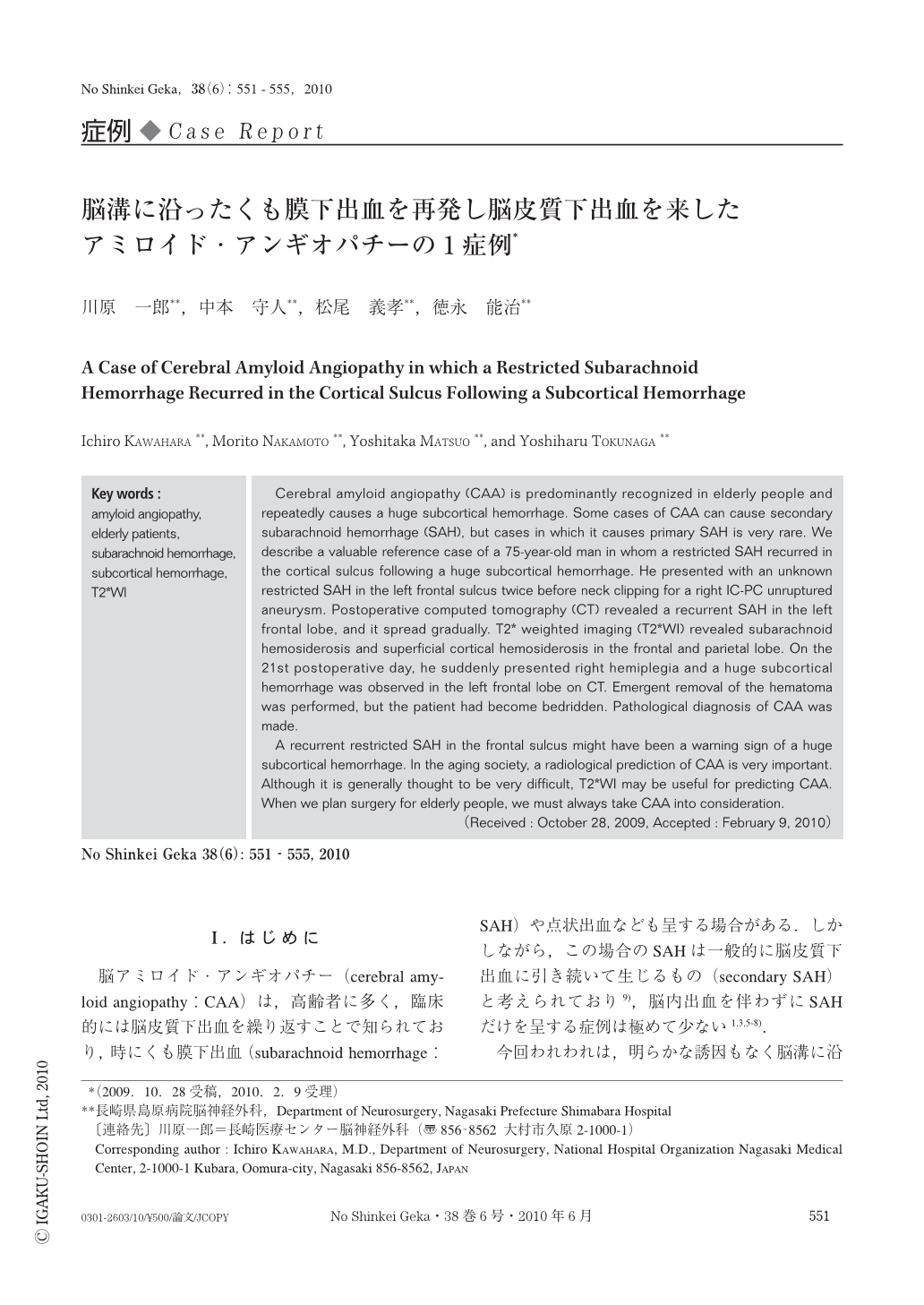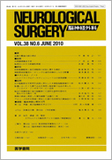Japanese
English
- 有料閲覧
- Abstract 文献概要
- 1ページ目 Look Inside
- 参考文献 Reference
Ⅰ.はじめに
脳アミロイド・アンギオパチー(cerebral amyloid angiopathy:CAA)は,高齢者に多く,臨床的には脳皮質下出血を繰り返すことで知られており,時にくも膜下出血(subarachnoid hemorrhage:SAH)や点状出血なども呈する場合がある.しかしながら,この場合のSAHは一般的に脳皮質下出血に引き続いて生じるもの(secondary SAH)と考えられており9),脳内出血を伴わずにSAHだけを呈する症例は極めて少ない1,3,5-8).
今回われわれは,明らかな誘因もなく脳溝に沿ったSAHを繰り返し,同部位に脳皮質下出血を来した極めて貴重な症例を経験した.
Cerebral amyloid angiopathy (CAA) is predominantly recognized in elderly people and repeatedly causes a huge subcortical hemorrhage. Some cases of CAA can cause secondary subarachnoid hemorrhage (SAH),but cases in which it causes primary SAH is very rare. We describe a valuable reference case of a 75-year-old man in whom a restricted SAH recurred in the cortical sulcus following a huge subcortical hemorrhage. He presented with an unknown restricted SAH in the left frontal sulcus twice before neck clipping for a right IC-PC unruptured aneurysm. Postoperative computed tomography (CT) revealed a recurrent SAH in the left frontal lobe,and it spread gradually. T2* weighted imaging (T2*WI) revealed subarachnoid hemosiderosis and superficial cortical hemosiderosis in the frontal and parietal lobe. On the 21st postoperative day,he suddenly presented right hemiplegia and a huge subcortical hemorrhage was observed in the left frontal lobe on CT. Emergent removal of the hematoma was performed,but the patient had become bedridden. Pathological diagnosis of CAA was made.
A recurrent restricted SAH in the frontal sulcus might have been a warning sign of a huge subcortical hemorrhage. In the aging society,a radiological prediction of CAA is very important. Although it is generally thought to be very difficult,T2*WI may be useful for predicting CAA. When we plan surgery for elderly people,we must always take CAA into consideration.

Copyright © 2010, Igaku-Shoin Ltd. All rights reserved.


